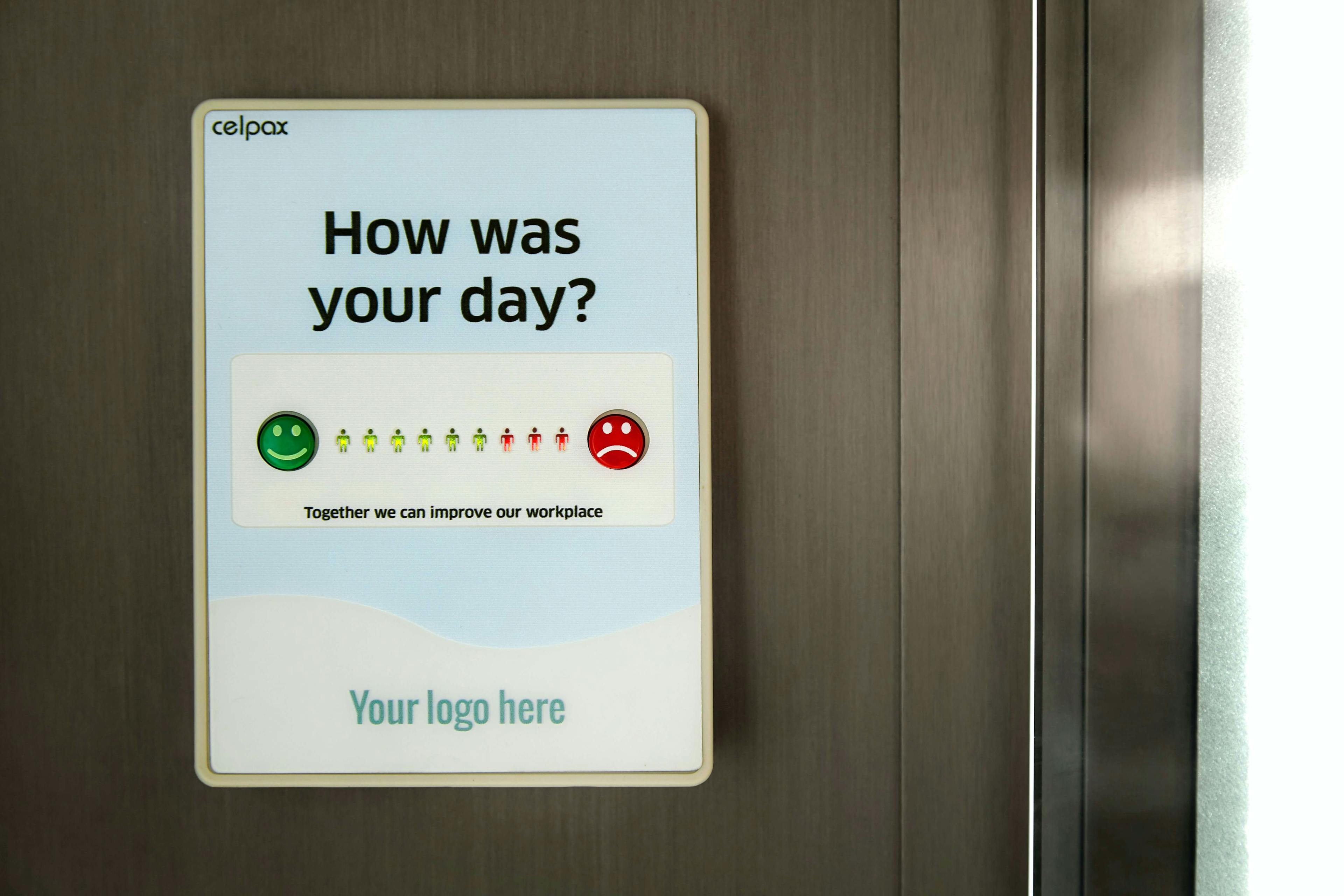Creating a successful workplace environment in 2024 that motivates and engages employees is possible by cultivating an effective feedback culture. Through embracing the power of employee feedback, organizations are able to maximize their staff’s potentials as well as ensure better results for themselves. Here you will find 35 strategies which can be utilized to build such impactful feedback cultures within any organization.
Key Takeaways
Create a feedback culture of open communication and mutual support to motivate and inspire employees
Foster an environment of recognition, growth, collaboration & teamwork for increased engagement
Measure the impact with surveys, metrics & retention rates for continuous improvement
The Importance of Employee Feedback Culture
A feedback culture that is robust and flourishing can provide the necessary foundation for a successful organization. It is this connection between employee dedication to work and organizational aims, values, targets which makes effective feedback invaluable. It is feedback example lets employees know they are valued whilst at the same time motivating them to produce their best results, ultimately driving organizations forwards in prosperity.
So how do strong frameworks of communication aid workplace success?
Enhanced employee engagement
When employees feel respected and valued, their engagement with the organization increases exponentially. To build this connection between workers and the company, creating a strong feedback culture is essential in order to recognize accomplishments and appreciate everyone’s contributions. Having such positive attitude will spread throughout colleagues. Inspiring them while cultivating an encouraging work atmosphere which ultimately leads to increased employee engagement as well as boosting team spirit. This kind of positive impact on staff can have powerful effects for any business by recognizing individual strengths that could benefit both parties, employers getting more committed personnel while individuals develop a greater sense of purpose..
Improved performance and productivity
Providing regular feedback to employees is an important component of driving performance and productivity. Positive reinforcement can be very effective in promoting the kind of positive behavior that that contributes to success, as well as helping individuals recognize their own strengths and accomplishments. This will motivate them While encouraging others around them to push for higher achievement levels overall. It’s this supportive atmosphere that then leads towards enhanced individual output from each employee, leading consequently improved business results organization-wide.
Strengthened teamwork and collaboration
Creating an environment of open communication and support is essential for strengthening collaboration among team members. Through giving positive feedback, employers can demonstrate appreciation to the contributions each person has made. This recognition encourages others in turn to remain dedicatedly involved with the collective purpose of their group. Doing so reflects positively on all parties as a whole, stimulating future teamwork throughout the organization.
By acknowledging individual’s impact within groups dynamic and rewarding them accordingly, it allows employees to find motivation which then contributes even more towards success as a unit - thus creating an ideal cycle of advancement through cooperation amongst colleagues that benefit everyone concerned- not just those providing input directly but also organizations the entire team and staff base at large .
Higher employee retention rates
Fostering a feedback culture that encourages growth and progress is fundamental to having high employee retention rates. By recognizing individual abilities, appreciating work done well and offering positive reinforcement, staff morale will be improved which in turn leads to increased job satisfaction for employees. This ultimately results in higher loyalty toward the organization over time making it more successful overall. An atmosphere of ongoing improvement enables teams to stay motivated and engaged with their roles leading them down a path towards productivity as well as fulfilling careers within your business – helping make sure top talent stays on board for the long haul
Types of Employee Feedback
By leveraging a combination of employee feedback types like formal, informal, manager-to-report and peer review to peer feedback in order to create an ecosystem customized for their requirements. Organizations can establish a strong company culture that helps promote the growth and development via fostering an effective feedback system.
It is necessary for organizations understand nuances as well as advantages related with different forms of giving feed back so they could choose suitable approach based on scenario at hand. This comprehensive practice will facilitate employees engagement while offering them aid in expansion and progress through the best possible mode – A dynamic open dialogue style environment that promotes idea sharing among peers too!
Formal feedback
Formal feedback serves as the base of a well-developed and systematic performance review process. Reviews, assessments, and evaluations are common examples which allow personnel to comprehend their work results precisely with insight on where development may be necessary.
With formal feedback in place within an organization’s feedback culture there are several advantages: improving employee engagement. Elevating productivity & efficiency. Augmenting teamwork & collaboration between co-workers all while enabling staff members to receive insightful analysis into their performance whilst suggesting areas for growth. By incorporating official comments this encourages effective worker communication that can turn into tangible success outcomes over time..
Informal feedback
Day-to-day, natural workplace communication that provides short reactions is known as informal feedback. It may come in forms of conversations, emails or messages and has a more instantaneous quality than formal feedback. Quickly receiving comments on job performance, conduct or relationships permits employees to promptly make any essential adjustments or improvements.
The advantages which accompany informal feedback are: greater work productivity and effectiveness, higher employee satisfaction, plus stronger teamwork among colleagues. Developing an atmosphere where such spontaneous reviews can be freely given helps build a healthy environment wherein personnel feel recognized and respected
Manager-to-report feedback
Manager-to-report feedback is an invaluable tool for organizations as it helps shape employee direction, offers necessary support and development possibilities. Establishing a feedback culture wherein managers regularly provide guidance enables the organization to align its goals with employees’ expectations, building loyalty and inspiring continuous progress. The benefits of this kind of communication are numerous. By providing meaningful manager-to-report feedback, companies can create an atmosphere that encourages growth and achievement.
Peer-to-peer feedback
Giving peer feedback is an important way to build trust and collaboration, encourage growth in colleagues, and elevate employee engagement. It offers a different view of individual performance that reveals the strengths one has as well as areas for improvement. As with any form of communication though it’s necessary to be aware of both positive and negative feedback examples, so interactions are constructive yet supportive. When done correctly peer-to-peer feedback can provide powerful insights into how teams work together. Fostering success by forming meaningful relationships among staff members within companies or organizations.
Creating a Positive Feedback Loop
Creating a positive feedback loop involves encouraging constant input, recognizing achievement and motivating continuous improvement. By placing these elements at the heart of its feedback system, businesses can ensure staff feel valued and their views are taken into account whilst also pushing them to reach higher standards. A critical part in this process is offering constructive praise which drives home the importance of such an atmosphere as well as reinforces the cycle positively. On top of that though negative feedback and criticism should be used productively to Improve areas not up-to-scratch while giving examples which workers can replicate or build upon going forward helps employees grow professionally too.
Having a culture based on peer feedback examples providing regular insights has many advantages for both business success but most significantly increases employee satisfaction since they have goals set out clearly for them with recognition given when achieved, creating an environment ripe for self development opportunities as time progresses within it too! An easy way organizations strive towards making sure all those involved benefit from what’s implemented is demonstrating how beneficial positive reinforcement may be so inspiring workforces who end up being rewarded consequently themselves by said effects coming full circle due to uplifted attitudes overall stemming therefrom
Encourage regular feedback
In order to keep communication lines open and nurture growth, a culture of regular feedback should be established. Through various forms like manager-to-employee, or negative peer feedback examples, reviews or informal conversations the staff can benefit from evaluating their work performance as well as areas where they need improvement. By regularly giving and receiving constructive criticism employees will feel valued To being inspired for development on both personal level as well professional one. Hence by embracing such type of discussions organizations are able create an environment that embraces continuous enhancement with each team member motivated towards success
Recognize and celebrate achievements
Organizations can cultivate ongoing success through recognizing and commending employee accomplishments. When employees have their efforts appreciated, it not only bolsters individual morale but also creates a constructive feedback cycle which propels the collective enterprise forward. Acknowledging performance ignites pride in individuals who will then aspire to even more impressive feats as they feel truly part of the company’s narrative of excellence. Celebrating successes is key for both spurring on Achievements and allowing staff members to appreciate all that has been accomplished up until now.
Foster continuous improvement
Organizations can foster a culture of continuous improvement by offering employees learning and development opportunities. These initiatives equip staff with the capabilities needed to succeed, leading to an environment that promotes growth and excellence. Various strategies such as process mapping, Kaizen activities, or Lean Six Sigma may be used in order to pinpoint wastes and increase productivity—ultimately helping organizations achieve their goals while fostering creativity among its workforce through teamwork
Best Practices for Giving and Receiving Feedback
In order to create a constructive feedback culture, it is important for employees and managers alike to practice good habits. This includes being specific in the comments given, acting promptly on issues as they arise, having a balanced point of view while giving feedback sandwich even out criticism. Concentrating more so on actions instead of personalities and allowing an open exchange between both parties involved. Such measures ensure that everyone feels heard when participating in conversations surrounding growth or development within the workplace which can lead into greater employee morale thereby producing better results for any organization overall.
Be specific and timely
It is essential to provide staff with precise and immediate feedback in order for them to identify their strengths as well as areas that may require more attention. Such advice, which is both accurate and timely, can make a real difference if acted upon promptly by workers so they are able to effect positive changes.
Some advantages of providing specific and prompt comments include fostering better comprehension of one’s role within the business organization along with its overall success, stimulating a greater sense of belongingness amongst other team members working there, plus orienting individual pursuits towards obtaining company goals efficiently.
Use a balanced approach
Creating a successful feedback culture involves utilizing constructive criticism and positive reinforcement simultaneously. Praising accomplishments as well as pinpointing areas of improvement allows for an atmosphere built on trust, thus promoting efficiency in giving feedback.
Adopting a balanced approach to input ensures that staff feel both supported and pushed toward higher levels of excellence. By blending encouraging words with assistance designed to sharpen skillsets employees can achieve greater success individually whilst developing holistically within the team/organization.
Focus on behavior, not personality
When it comes to giving feedback, the focus should be on behavior instead of personal traits in order for a growth mindset and freedom from any kind of criticism to be promoted. Constructive comments regarding observable actions, performance and results allow employees to recognize their abilities while identifying areas that need improvement – paving the way for self-development opportunities.
Behavior oriented feedback creates an atmosphere where objective evaluations can take place which encourages individuals towards desirable behaviors so they achieve satisfactory outcomes. By maintaining this type of constructive system within the workplace environment rather than considering characteristics helps form a successful culture based around providing meaningful inputs without attack or reproachful remarks being made against personalities involved.
Encourage two-way communication
Creating an atmosphere of constructive collaboration and support starts with the encouragement of a two-way exchange. When employees feel secure expressing their opinions, it can pave the way for greater growth opportunities within organizations.
Encouraging open communication between staff and managers fosters understanding while also building trust in working relationships. This is how businesses create a supportive feedback culture that motivates better performance outcomes - by ensuring everyone feels like they are part of two-way dialogue rather than one directional instruction giving or criticism receiving.
Implementing Feedback Tools and Technologies
Incorporating feedback tools and technologies into the existing feedback culture can foster a highly successful environment that encourages continuous improvement. By using employee feedback software, performance management systems, communication platforms, and other solutions designed to capture data efficiently with accurate assessment capabilities organizations can generate an effective ecosystem for growth, development and engagement among employees. This expedites not only the process but also adds value in achieving desired results such as greater employee satisfaction through frequent interactions related to their work experience.
Employee feedback software
Organizations that want to be able to record, assess and act on comments from their staff can take advantage of employee feedback software. Through these tools, companies are able to keep track of the information they receive about employees’ performance as well as analyze it accurately. Allowing them a deeper comprehension into how personnel is doing overall with regards to satisfaction levels and engagement.
Using this kind of software enables organizations not only improve their input culture but also make decisions driven by data in order for employees’ growth, development and success become attainable goals..
Performance management systems
Organizations can use performance management systems as powerful tools to measure, set goals and monitor employee progress while providing meaningful feedback. This software assists organizations in pinpointing areas for improvement, enabling them to gain valuable insights into how employees are performing so they can craft a comprehensive feedback structure that supports professional growth and achievements. The ability of these systems to track accomplishments alongside offering constant constructive advice is beneficial in driving success through every member of the team.
Communication platforms
By utilizing communication platforms, businesses can cultivate an environment of continuous feedback, and collaboration. These tools are helpful in creating connections between employees and their managers so that ideas can be shared, reflections offered up, and projects worked on collectively. Establishing a feedback culture with the use of such systems has great potential to inspire growth within organizations as well as enabling positive development opportunities for all involved.
Not only do these methods help reinforce dialogue but they also make it possible for teams to create meaningful interactions which could lead to better overall performance across multiple levels of the business structure.
Training Managers and Employees on Feedback Skills
To cultivate a productive feedback culture for growth and development, companies must train their managers and staff on how to give/receive constructive feedback effectively. By educating both groups in this area of expertise, organizations can generate an atmosphere where communication is open and continual advancement takes place.
Investing resources into teaching these necessary leadership skills will ensure that conversations surrounding effective feedback become the norm among employees—promoting employee satisfaction while leading to overall organizational success.
Manager training
Organizations must offer managerial training in order to foster an effective feedback culture. This type of instruction should focus on teaching supervisors the best ways to guide and motivate employees, while still providing constructive criticism where needed. The goal is for leaders to be able to identify opportunities for growth through meaningful interactions that help build engagement, enhance performance levels, and increase retention rates among staff members. By developing their leadership abilities and learning how to provide helpful comments or advice related specifically with skills development can give managers more confidence when giving out useful and positive feedback examples instead of simply focusing on areas needing improvement only .
Employee training
Organizations can cultivate a feedback culture that encourages growth, development and success through training their employees on the importance of giving and receiving constructive feedback while equipping them with the communication skills and abilities. This kind of preparation provides personnel with the capabilities to embark in effective conversations around this topic. By granting access to tools and techniques for these exchanges it enables companies to foster an atmosphere based on open dialogue, collective work as well as constant enhancement.
Measuring the Impact of Employee Feedback Culture
Evaluating employee engagement surveys, performance metrics and retention rates can provide organizations with valuable insights to help understand the effectiveness of their feedback culture as well as recognize areas for improvement. By consistently gauging the impact of this feedback environment, they are able to support staff development, growth and satisfaction while also striving for success in overall operations. Regular monitoring enables them to make informed decisions regarding Enhancing its value within their workplace.
Employee engagement surveys
Measuring the success of a feedback culture can be conducted using employee engagement surveys. These provide organizations with an opportunity to gain insights on job satisfaction, performance levels and overall level of involvement from employees. Through regular surveys, companies are able to identify any areas that need Improvement in their current initiative as well as stay abreast of all changes relating to worker engagement over time.
By collecting data through these evaluations, businesses have access into what employees think about particular topics or projects within the organization. Allowing them even more capacity when it comes influencing successful communication between colleagues and increasing productivity due to effecting feedback methods being employed across departments throughout the company’s operations.
In summary: Employee Engagement Surveys offer invaluable information regarding how effective existing practices for fostering better feedback cultures may be proving, which provides valuable guidance when making improvements where needed so that everyone is working together towards accomplishing shared goals set out by management team members alike.
Performance metrics
Tracking performance metrics is a useful way for organizations to measure the effect of their feedback system on employee productivity and performance. By tracking key indicators, they can analyze how successful this culture has been in advancing progress or encouraging worker engagement. Using these figures, it’s possible to discern successes and pinpoint places where improvement may be needed. Thus, allowing them to construct an effective ecosystem that nurtures employees’ growth and success. Monitoring such metrics regularly helps inform ongoing development of the company’s feedback practices.
Retention rates
Retention rates can be used to evaluate the success of a feedback culture in terms of employee satisfaction and retention. If they are high, it reflects positively on an organization’s feedback system indicating that employees feel supported and engaged with their roles. This suggests that this type of workplace environment is conducive to organizational success. By tracking these metrics regularly, organizations will have assurance that their methods for delivering constructive criticism remain beneficial for all involved parties.
Summary
Creating an effective employee feedback culture is essential for organizational success. By utilizing best practices, implementing various forms of feedback, creating a positive loop and using tools/technology to support it, organizations can create an engaging environment that encourages growth and development among employees. To ensure the successful implementation of this type of culture continuous measurement must be done along with investments in training on skills related to giving proper feedback. This positive feedback example will help foster performance, collaboration as well as lay the groundwork for achieving desired objectives within the organization
Frequently Asked Questions
What is the culture of feedback?
Feedback culture is a type of environment which encourages individuals to freely, securely and positively communicate their opinions and assessments. It creates an atmosphere in organizations or educational institutions where people are comfortable providing feedback without any trepidation.
How does culture affect feedback?
The way we provide feedback can be greatly influenced by our cultural backgrounds. Individuals with indirect cultures will utilize subtle language and words to soften their critique, whereas those from more direct countries might incorporate ‘upgraders’ when giving positive comments. This technique benefits relationships between both the giver and receiver of such messages. Consequently, this creates a greater level of understanding amongst them through constructive evaluation in timely manner that remains courteous in nature at all times.
How do you build a strong feedback culture?
To build a strong feedback culture, start by setting clear expectations and providing training for employees on how to give and receive feedback. Then ensure respect is a priority and use multiple channels to help employees practice giving and receiving feedback in a judgment-free zone.
Lastly, act on employee feedback and celebrate team accomplishments with positive reinforcement.
What is an example of good employee feedback?
Employee feedback can be an excellent way to encourage continued hard work and dedication. Expressing appreciation for their efforts is a great example of this. Let them know you recognize the challenge that comes with managing complex projects or staying late, but still value all the extra effort they put in. By expressing your gratitude towards these sorts of endeavours, employees feel motivated to continue striving towards success.
What are the different types of employee feedback?
Employee feedback can take many shapes, from structured conversations between managers and their reports to informal positive peer feedback examples one-to-peer exchanges. Each of these offers unique benefits.



